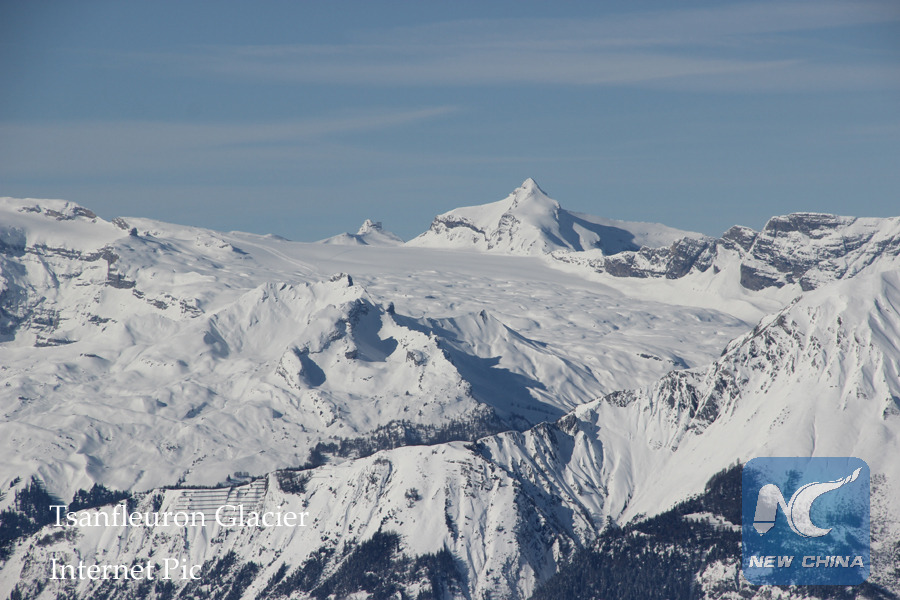
Tsanfleuron Glacier is a 3.5-km-long glacier (2005) situated in the western Bernese Alps in the cantons of Valais and Vaud in Switzerland. This photo was taken on Feb. 7 of 2015.
GENEVA, Aug. 4 (Xinhua) -- Frozen human remains found in the Alps in recent weeks are a sign that alpine glaciers are melting rapidly, and could disappear entirely by the end of the century, the Swiss national broadcaster reported Thursday.
In mid-July two frozen corpses were found in the shrinking Tsanfleuron glacier near the border between Cantons Bern and Valais, not far from the famed resort of Gstaad.
Last week, a human hand and leg were uncovered on the Bossons glacier on Mont Blanc in France, another popular tourist area.
The remains could belong to passengers of one of two aircraft, both belonging to Air India that crashed into the glacier, one in 1950 and the other in 1966, the Swiss broadcaster reported on its website Swissinfo.
Earlier this week, a body partially encased in ice was found by hikers on the slopes of the Lagginhorn in Switzerland's canton Valais.
It is believed to be the body of a German hiker who died 30 years ago while attempting to climb the mountain.
More such findings are likely in the coming years as alpine glaciers continue to recede, commented Swissinfo noting that scientists have predicted that all the ice sheets in the Alps will be gone by 2100 due to climate change.
That and other projections are based on the work of a Nobel Prize-winning group of climate scientists' external link who track global warming.
"In the mountains and higher elevations, you will have just rocks and debris," Kathy Riklin. the Swiss parliamentarian who heads the government's top advisory body on climate change external link told swissinfo.ch in 2016. "It will be a different world."
Switzerland's glaciers reached their maximum extent in the middle of the 19th century, at the end of the period known as the Little Ice Age.
The shrinking and eventual disappearance of the glaciers will have wide-ranging consequences for Switzerland, since most hydroelectric dams in the Alps draw their water from glaciers and thawing will triggered more land and rockslides, said Swissinfo.

